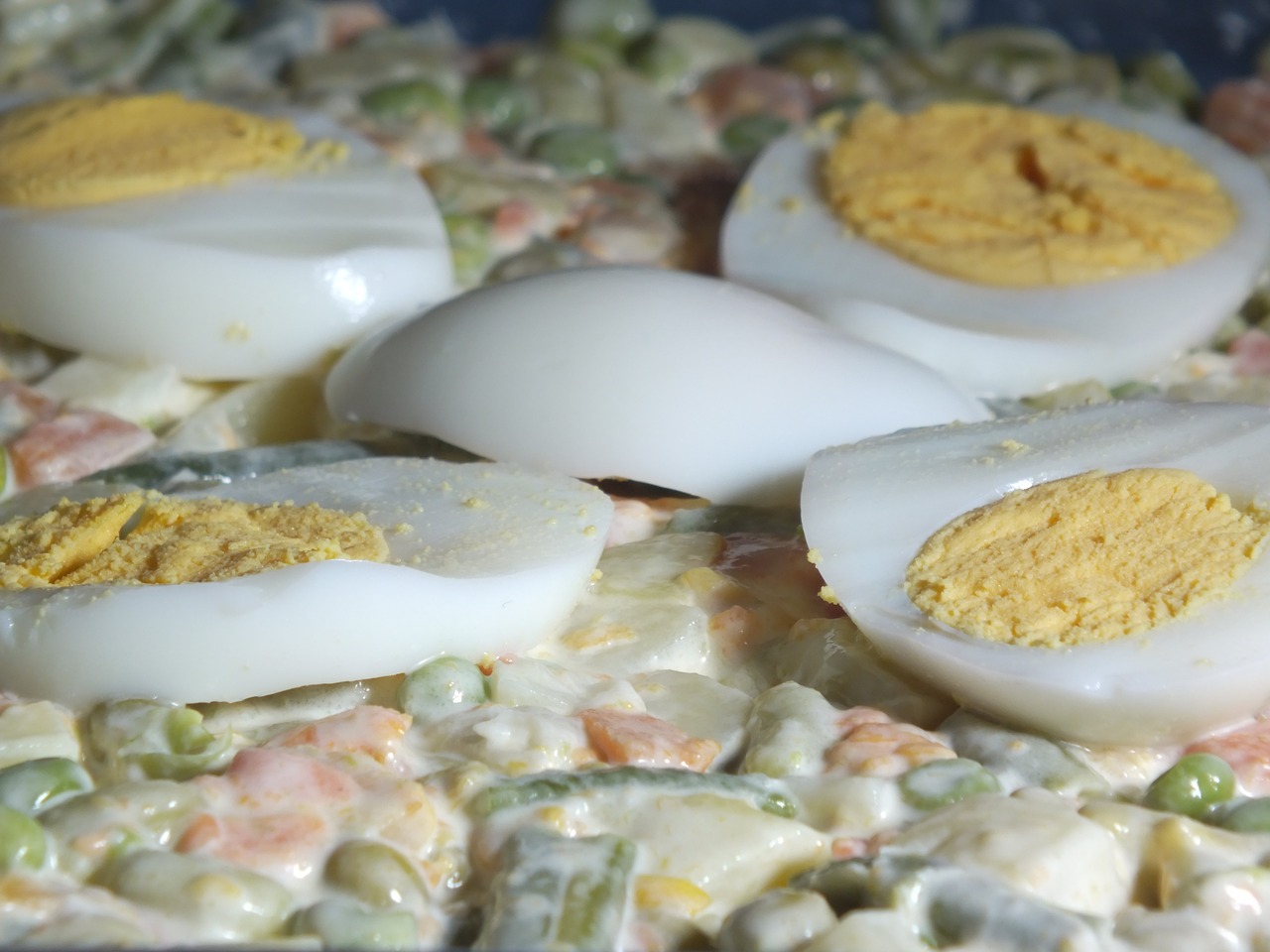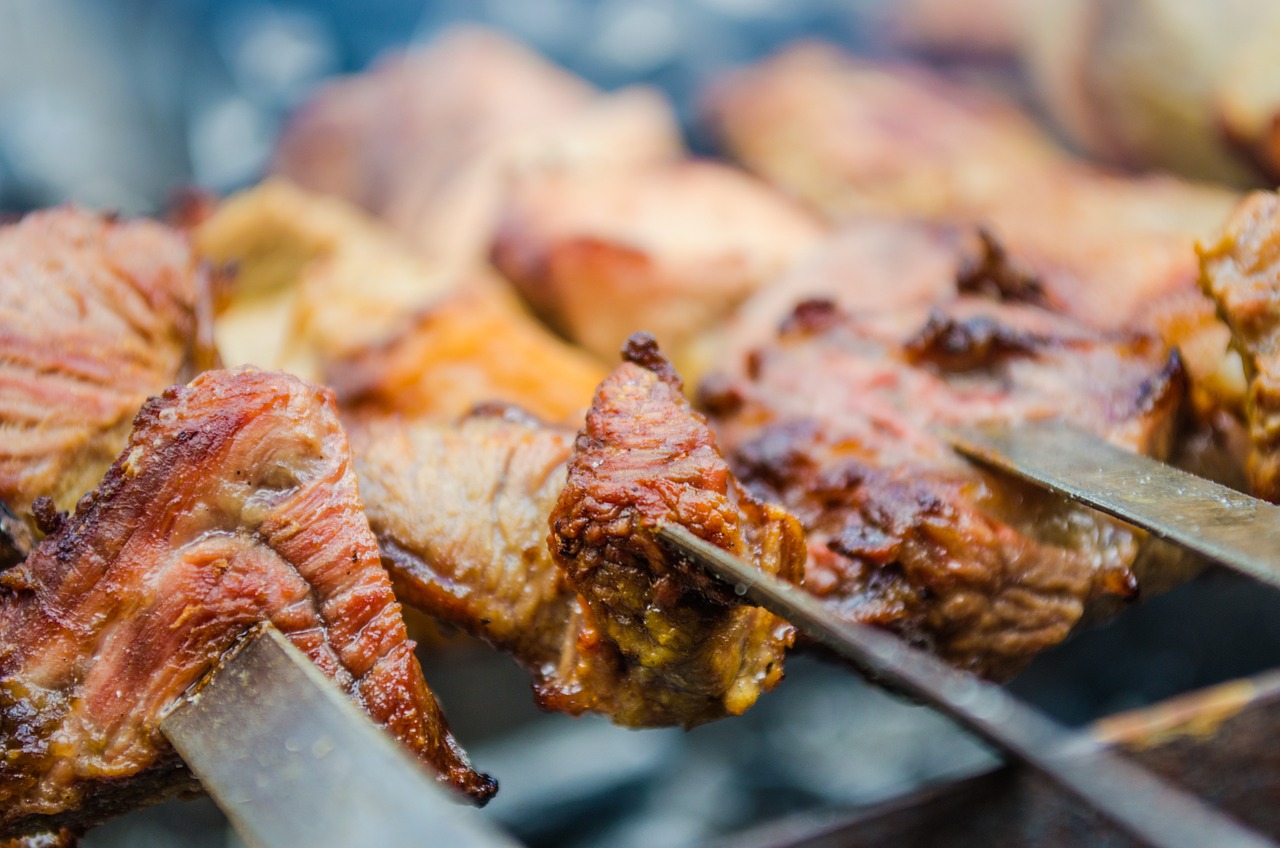Russkaya Salat: Russian Salad with Potatoes, Carrots, Peas, and Mayonnaise

Exploring the traditional Russian dish known as Russkaya Salat, a flavorful salad made with potatoes, carrots, peas, and mayonnaise. Learn about its history, ingredients, preparation, and cultural significance in Russian cuisine.
Origin and History
Exploring the origins and history of Russkaya Salat reveals a fascinating journey through Russian culinary traditions. This beloved salad, also known as Russian Salad, has deep roots in the country's history, dating back to the late 19th century. Originally created by the famous French chef Lucien Olivier in Moscow, the salad was a culinary masterpiece that quickly gained popularity among the Russian elite.
The original recipe of Russkaya Salat was a closely guarded secret, with only a few trusted chefs knowing the exact ingredients and preparation method. Over the years, the salad underwent several modifications, adapting to local tastes and ingredient availability. Despite these changes, the essence of Russkaya Salat remained intact, symbolizing a blend of Russian and French culinary influences.
As Russian cuisine evolved, Russkaya Salat became a staple dish in households across the country, enjoyed during various occasions from family gatherings to festive celebrations. Its widespread popularity eventually led to the salad's international recognition, with variations of the recipe found in different parts of the world.
Ingredients and Variations
When it comes to Russkaya Salat, the key ingredients play a crucial role in defining its unique flavor profile. The traditional recipe calls for a combination of potatoes, carrots, peas, and mayonnaise, creating a harmonious blend of textures and tastes. Let's take a closer look at each of these ingredients and explore the various variations that can be incorporated to elevate this classic Russian salad.
Potatoes: The humble potato forms the base of Russkaya Salat, providing a hearty and starchy element to the dish. Boiled potatoes are typically diced into small cubes, adding a soft and creamy texture to the salad. They serve as a substantial component that anchors the other ingredients.
Carrots: Carrots bring a touch of sweetness and vibrant color to Russkaya Salat. They are often grated or finely chopped, offering a crunchy texture and a burst of freshness. Carrots not only enhance the visual appeal of the salad but also contribute a hint of natural sweetness.
Peas: Peas introduce a pop of green color and a burst of sweetness to the salad. Whether fresh or frozen, peas add a delicate flavor and a slight crispness to each bite. They provide a refreshing contrast to the other ingredients and contribute to the overall balance of flavors.
Mayonnaise: The creamy and tangy mayonnaise serves as the binding agent that brings all the ingredients together in Russkaya Salat. It imparts a rich and luscious texture to the salad while adding a subtle tanginess that complements the earthy flavors of the potatoes and carrots.
While the classic recipe sticks to these fundamental ingredients, there are numerous variations of Russkaya Salat that allow for creative experimentation. Some popular additions and substitutions include:
- Hard-boiled eggs: Adding chopped hard-boiled eggs introduces a protein-rich element and a creamy texture to the salad.
- Pickles: Diced pickles can contribute a tangy and briny flavor, enhancing the overall complexity of the dish.
- Apples: Sliced or diced apples bring a touch of sweetness and a crisp texture, offering a unique twist to the traditional recipe.
- Ham or chicken: Including diced ham or chicken adds a savory element and protein content, making the salad more filling and substantial.
These variations allow for personalization based on individual preferences and culinary creativity. Whether sticking to the classic combination of potatoes, carrots, peas, and mayonnaise or experimenting with additional ingredients, Russkaya Salat remains a versatile and beloved dish that can be adapted to suit diverse tastes.
Preparation and Serving
When it comes to preparing and serving Russkaya Salat, attention to detail is key to ensuring a delicious outcome that will impress your guests. Let's dive into the step-by-step process of making this traditional Russian salad:
- Begin by gathering all the necessary ingredients: potatoes, carrots, peas, mayonnaise, and any additional toppings or seasonings you prefer.
- Peel and chop the potatoes and carrots into small, uniform cubes to ensure even cooking and a consistent texture in the salad.
- Boil the potatoes and carrots until they are tender but still firm to the bite. Be careful not to overcook them, as they can become mushy.
- Cook the peas separately until they are cooked through but still retain their vibrant green color. You can use fresh or frozen peas based on your preference.
- Once all the vegetables are cooked, allow them to cool to room temperature before assembling the salad. This will prevent the mayonnaise from melting and maintain the salad's texture.
- In a large mixing bowl, combine the cooked potatoes, carrots, and peas. Add mayonnaise to the mixture and gently fold everything together until well coated.
- Season the salad with salt and pepper to taste, and adjust the mayonnaise quantity based on your preference for creaminess.
- For an extra burst of flavor, you can add diced pickles, boiled eggs, or fresh herbs like dill or parsley to the salad.
- Once the salad is thoroughly mixed and seasoned, cover the bowl with plastic wrap and refrigerate it for at least an hour to allow the flavors to meld together.
- When ready to serve, transfer the Russkaya Salat to a decorative serving dish and garnish with additional toppings like olives, capers, or a sprinkle of paprika for a colorful presentation.
- Enjoy this classic Russian salad as a side dish or a light meal, perfect for any occasion from casual gatherings to festive celebrations.

Cultural Significance
When it comes to the cultural significance of Russkaya Salat, it's more than just a dish in Russian cuisine; it's a symbol of tradition and togetherness. This salad holds a special place in Russian society, often making an appearance at festive occasions and gatherings, bringing people together around the dining table.
One of the key aspects of the cultural significance of Russkaya Salat is its association with celebrations and holidays. Just like how turkey is synonymous with Thanksgiving in the United States, Russkaya Salat is a staple during Russian New Year's Eve celebrations. It's not just a dish; it's a tradition that signifies the start of a new year filled with hope and prosperity.
Moreover, Russkaya Salat is more than just a culinary delight; it's a reflection of Russian hospitality and warmth. When a Russian host serves this salad to guests, it's not just about the food but about welcoming them into their home with open arms. The flavors of potatoes, carrots, peas, and mayonnaise come together to create a harmonious blend that symbolizes unity and harmony.
Furthermore, the act of preparing Russkaya Salat is often a communal affair, with family members coming together in the kitchen to chop vegetables, mix the dressing, and assemble the salad. This shared experience reinforces bonds between loved ones and creates lasting memories that go beyond just a meal.
In Russian culture, food is not just sustenance; it's a way of expressing love, care, and respect for others. Russkaya Salat embodies this sentiment perfectly, with each ingredient representing a piece of the cultural mosaic that makes Russian cuisine so unique and beloved.



 HazalVardal
HazalVardal 





